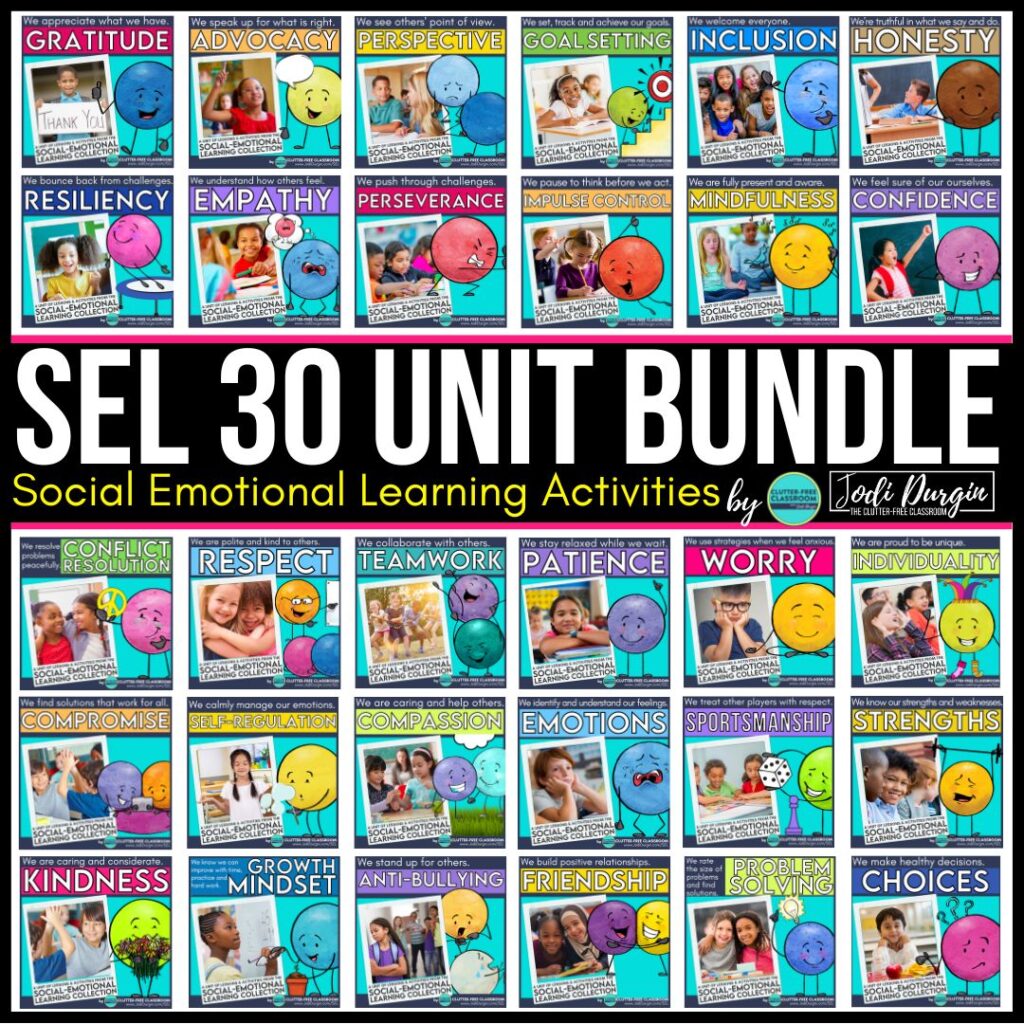If you are an elementary teacher looking to learn how to help your students set goals, then you found the right place! Goal setting skills prepare kids to set expectations and learning goals for themselves. Students who are able to set goals for themselves are more reflective and motivated than students who cannot. In this post, we’ll go into detail about what goal setting is and why it’s important. In addition, we’ll share tips and ideas for how to teach goal setting skills to elementary students in a classroom setting. Read all about helping students set goals for themselves in and out of the classroom below!
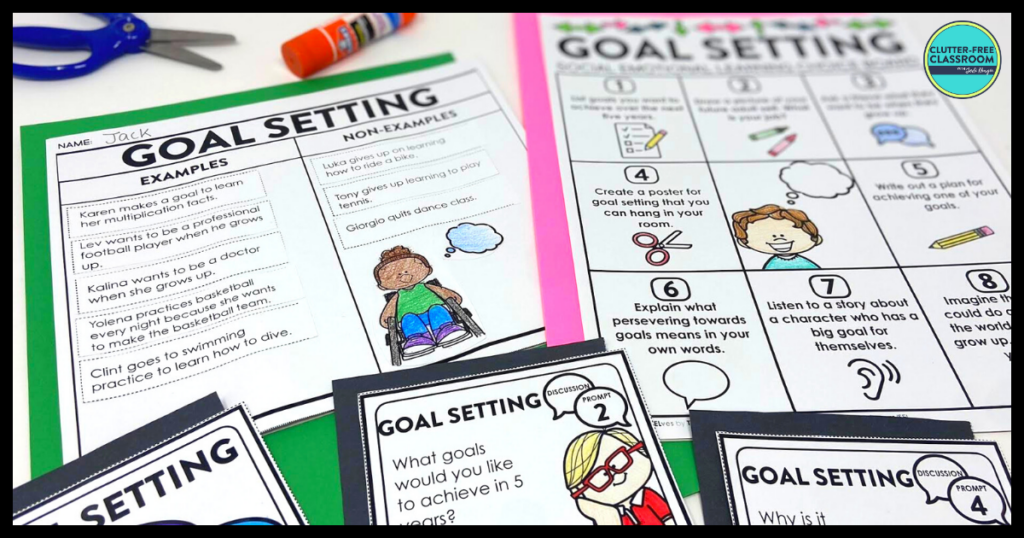
What Does Goal Setting Mean?
Goal setting is the ability to identify a task to be achieved, a timeline for achieving it, and a plan for achieving it. Motivated people set goals and work hard to achieve them.
Why is it Important for Kids to Set Goals?
It is important for kids to set goals because it is at the core of student-centered and student-directed learning. Kids who can set goals for themselves are able to identify what they are interested in and create a reasonable plan for meeting it. It is huge in fostering independent and confident learners.
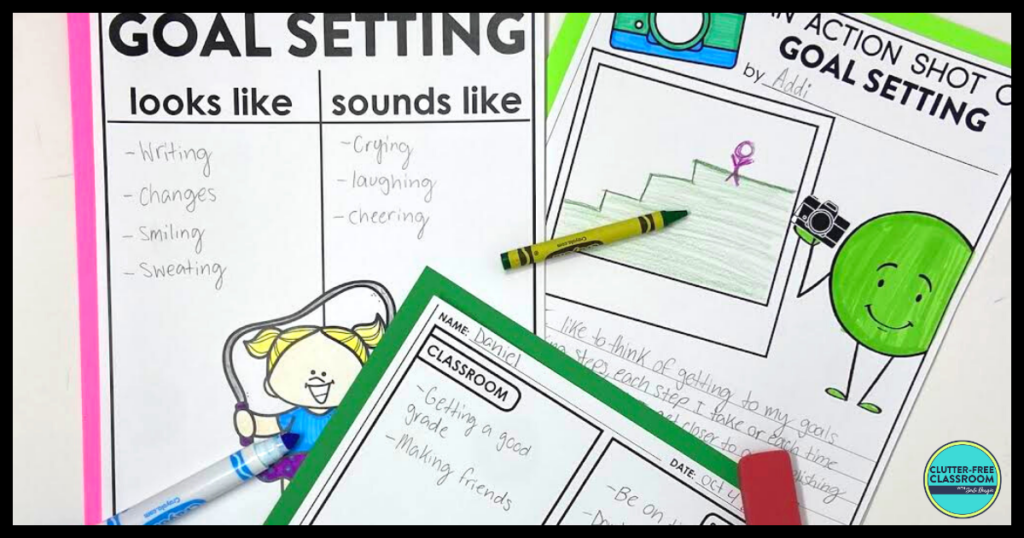
How Do I Know If I Need to Teach Goal Setting in My Classroom?
The students in your 1st, 2nd, 3rd, 4th or 5th grade classroom would benefit from goal setting lessons and activities if any of these statements are true:
- Students are struggling with a growth mindset.
- Students give up at the first sign of a struggle.
- You find a lot of students saying the phrases “this is too easy” or “this is too hard”.
- Students appear disengaged in their learning.
- Students might not be making as much progress as you expected them to.
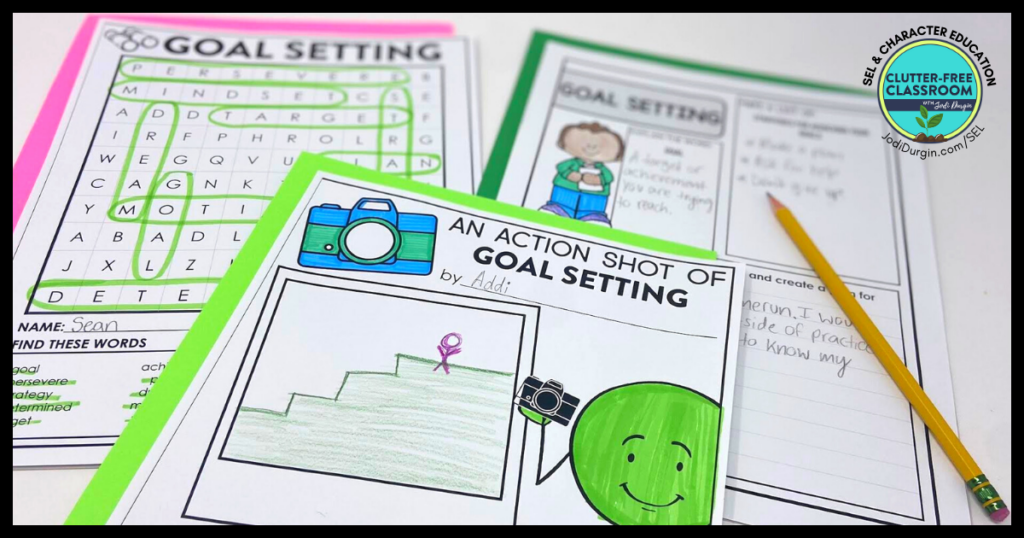
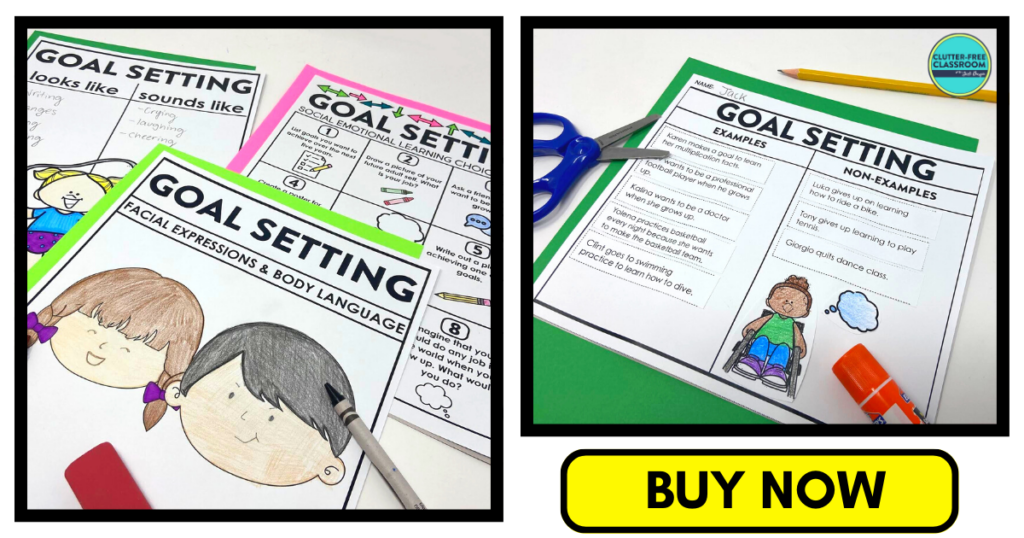
5 Reasons To Promote Goal Setting In Your Elementary Classroom
Below are 5 reasons to promote goal setting in your elementary classroom.
1. Your students will be more self aware
Students have to be self aware to be able to set reachable goals for themselves. Setting goals requires looking at strengths and weaknesses and finding an area that you want to grow in. As students are completing this process they will be growing their self awareness skills.
2. Students will become more reflective
Your kids will naturally become more reflective through the goal setting process. They will reflect on the best goal to set for themselves, their progress in reaching their goal and how they met their goal. This practice on reflecting can lead to other important SEL areas like self management and conflict resolution.
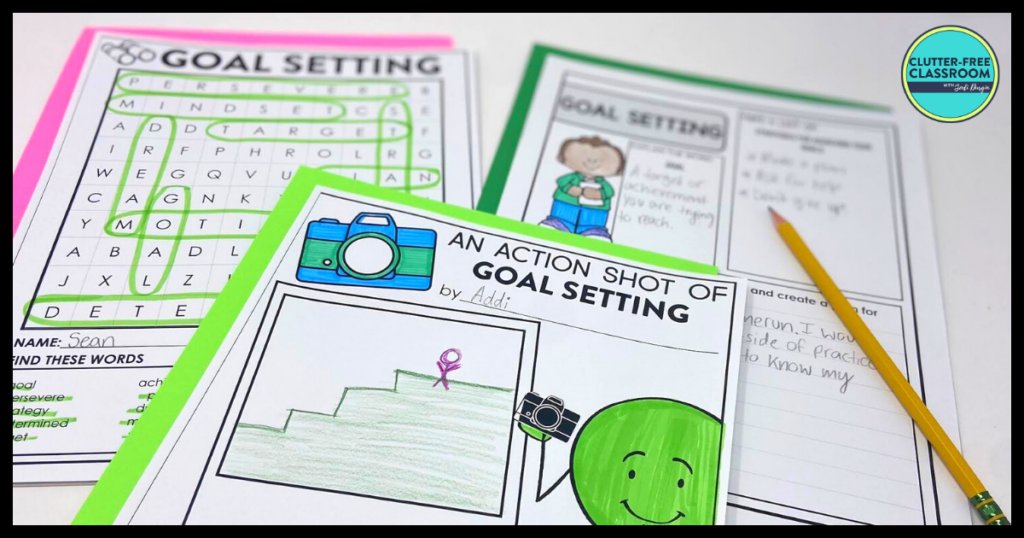
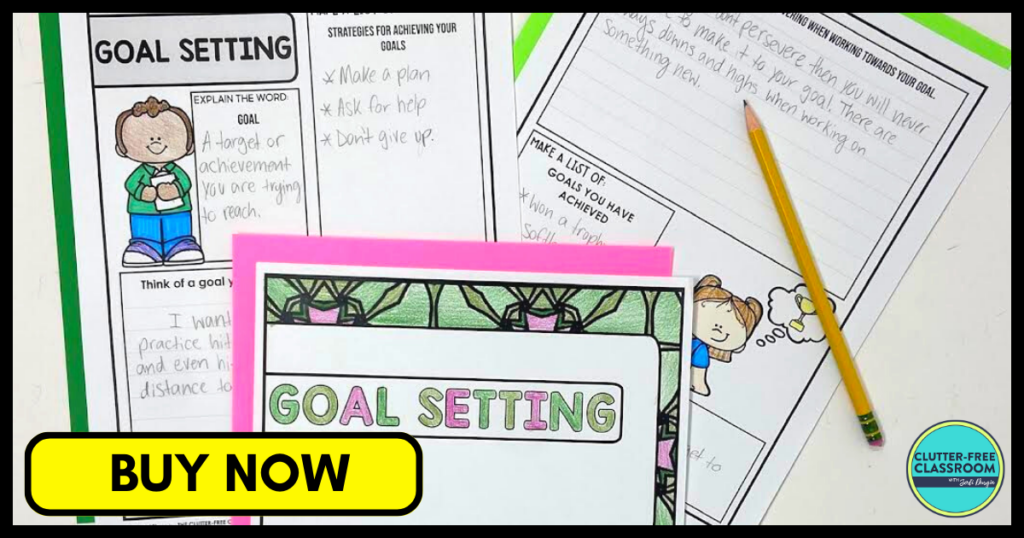
3. Students will be more motivated
Students who are setting goals will be more motivated to complete their assignments because they will have a voice in them. They will also more clearly see the bigger purpose (their goal) behind the activities that they are completing. They will clearly be working towards achieving something.
4. Students will learn progress monitoring
Students who are setting goals naturally learn to monitor progress. This means that they monitor how they are doing at reaching their goals, reflect on the progress they have made and make any chances necessary to continue to work towards reaching their goal. This progress monitoring will help them become more self aware.
5. Students will become more independent
Students who can set their own goals become more independent because they are taking control of their learning. They are looking at their learning and setting a goal of where they want to get to. They are then being reflective to help get themselves to the end goal.
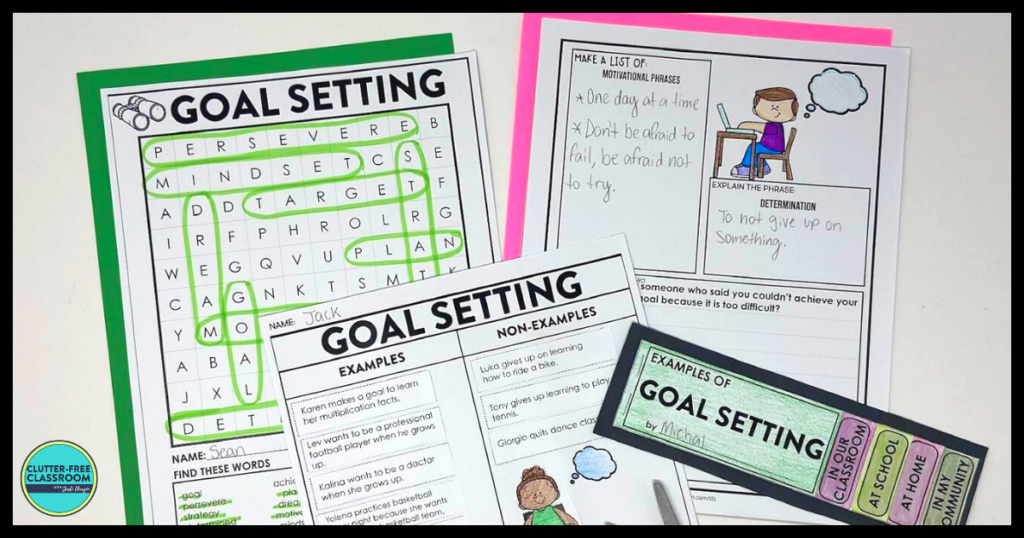
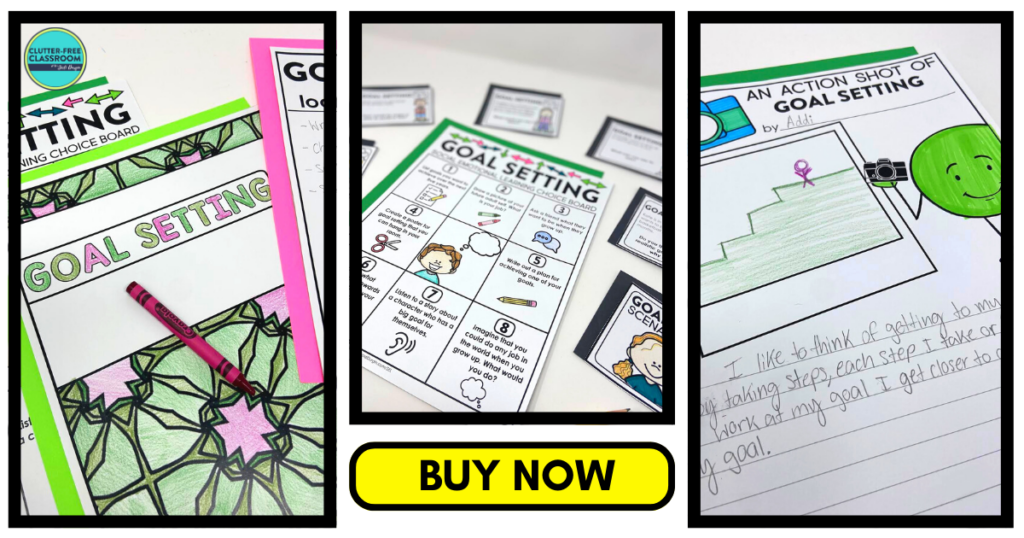
5 Tips and Ideas for Teaching Goal Setting
Below are tips and ideas for how to teach goal setting to your elementary students.
1. Read Aloud Picture Books about Goal Setting
Picture books are a great way to introduce and teach an SEL topic. It gets students thinking about the topic and activating their background knowledge. Check out this list of picture books for teaching goal setting!
2. Watch Videos about Goal Setting
There are tons of free online videos out there that promote social emotional learning. It’s a fun and engaging way to teach SEL skills that your students will enjoy. Check out these videos for teaching goal setting!
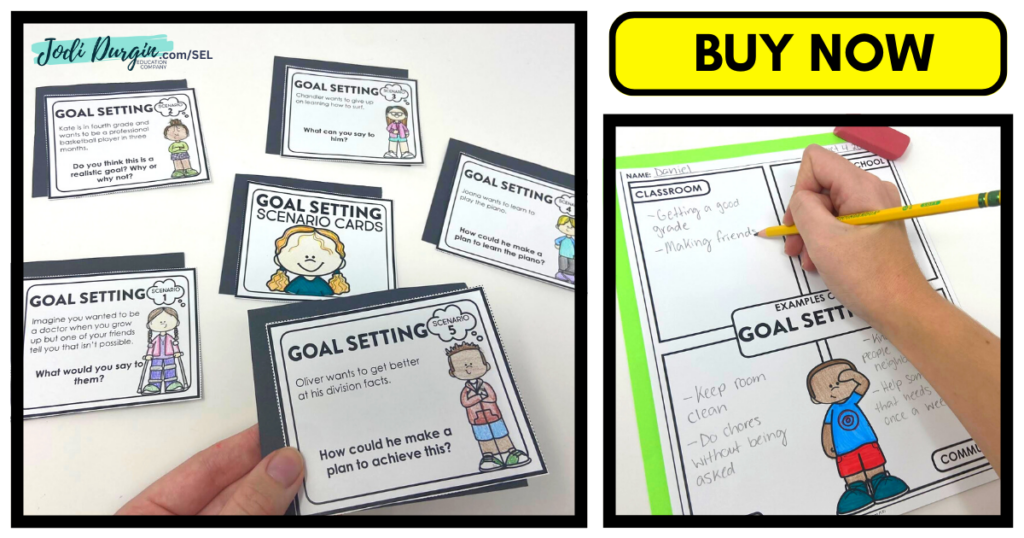
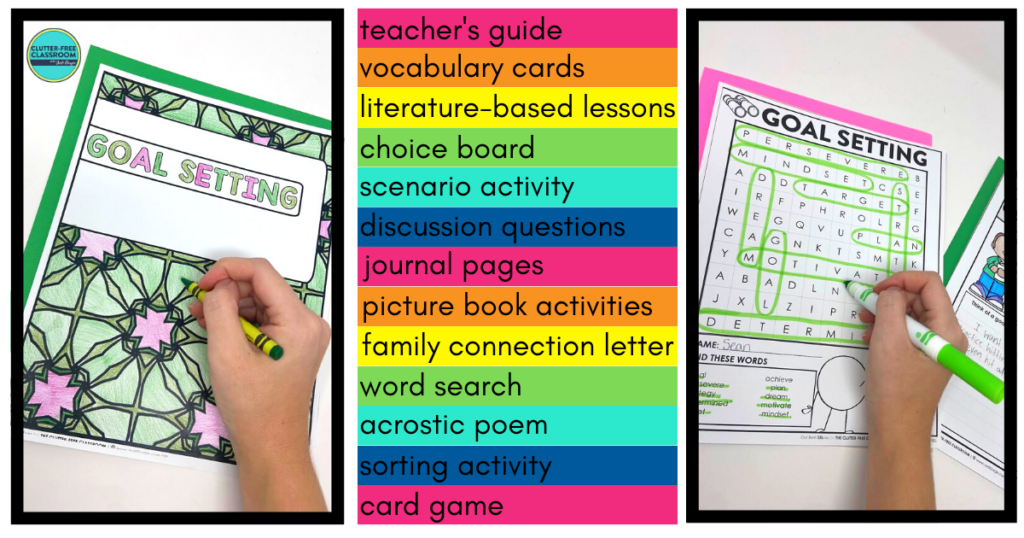
3. Explicitly Teach Vocabulary Related to Goal Setting
Vocabulary words can help students develop understanding of goal setting and create connections through related words. Our goal setting SEL unit includes ten vocabulary cards with words related to the SEL topic. It is important for students to be able to see, hear, and use relevant vocabulary while learning. One idea for how to use them is to create an SEL word wall as students learn the words.
4. Provide Practice Opportunities
When learning any skill, students need time to practice. Social emotional learning skills are no different! Our goal setting SEL unit includes scenario cards, discussion cards, choice boards, games, and much more. These provide students with opportunities to practice the skills independently, with partners or small groups, or as a whole class.
5. Integrate Other Content Areas
Integrating other content areas with this topic is a great way to approach this SEL topic. Our goal setting SEL unit includes reading, writing, and art activities.
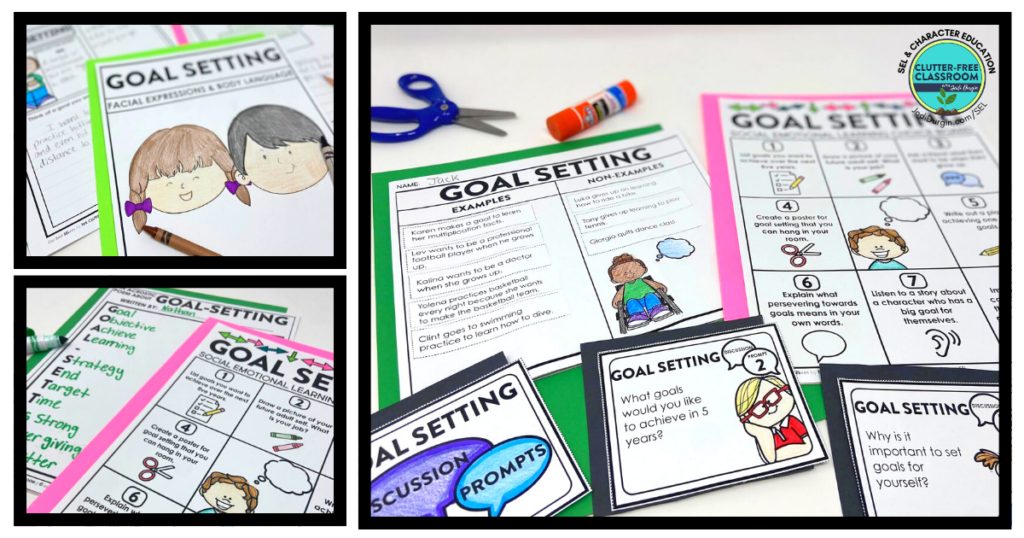
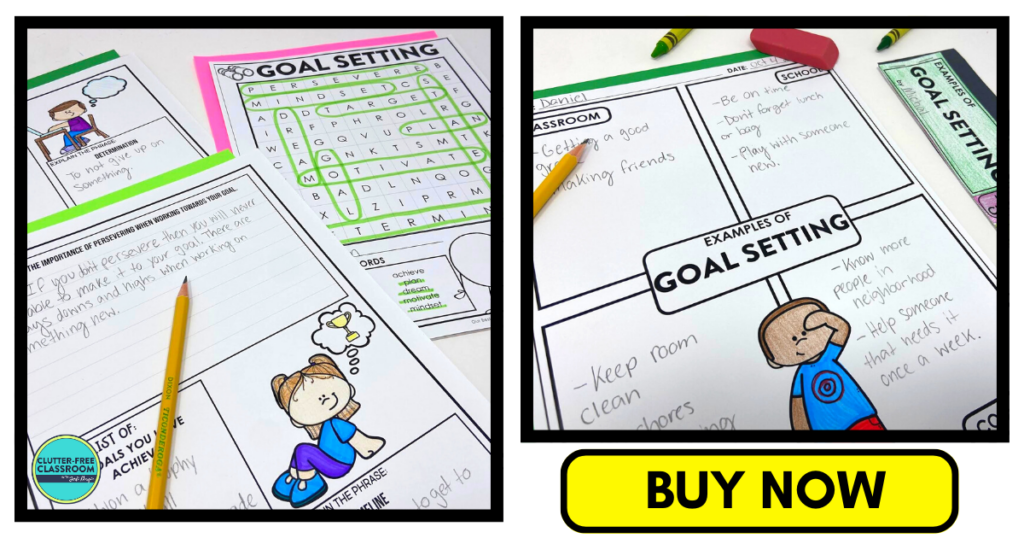
Skills Related to Goal-Setting
Goal-setting, in the context of social emotional learning (SEL) or character education, refers to the process of identifying specific objectives and creating a plan to achieve them. While “goal-setting” is the commonly used term, there are other words and phrases that can convey a similar meaning. These alternative words highlight different aspects of setting and pursuing objectives. Here are some other words used in the context of goal-setting:
- Objective-setting: Identifying clear and measurable targets to work towards.
- Intention-setting: Deliberately establishing intentions and aspirations for desired outcomes.
- Aim-setting: Determining the specific direction or purpose to strive for.
- Ambition: Setting high aspirations and goals for personal or professional growth.
- Target-setting: Establishing specific benchmarks or performance indicators to aim for.
- Outcome-setting: Defining the desired results or outcomes to achieve.
- Mission: Embarking on a purposeful journey to accomplish a meaningful objective.
- Aspiration: Setting long-term goals and aspirations that align with personal values and aspirations.
- Milestone-setting: Identifying significant markers or achievements along the path to a larger goal.
- Vision: Developing a clear mental image of a desired future state and working towards it.
These terms encompass the concept of goal-setting and reflect the process of establishing objectives and creating plans for personal growth and achievement within the context of social emotional learning (SEL) or character education.
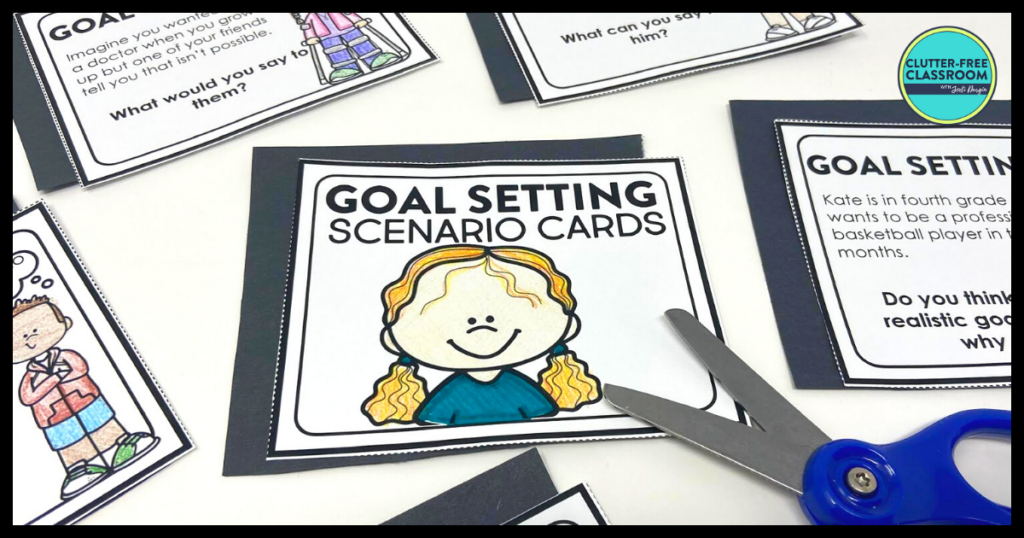
Download the SEL Activities
Click an image below to either get this individual goal setting unit or get ALL 30 SEL units!
In closing, we hope you found this information about how to teach goal setting to elementary students helpful! If you did, then you may also be interested in these posts.


